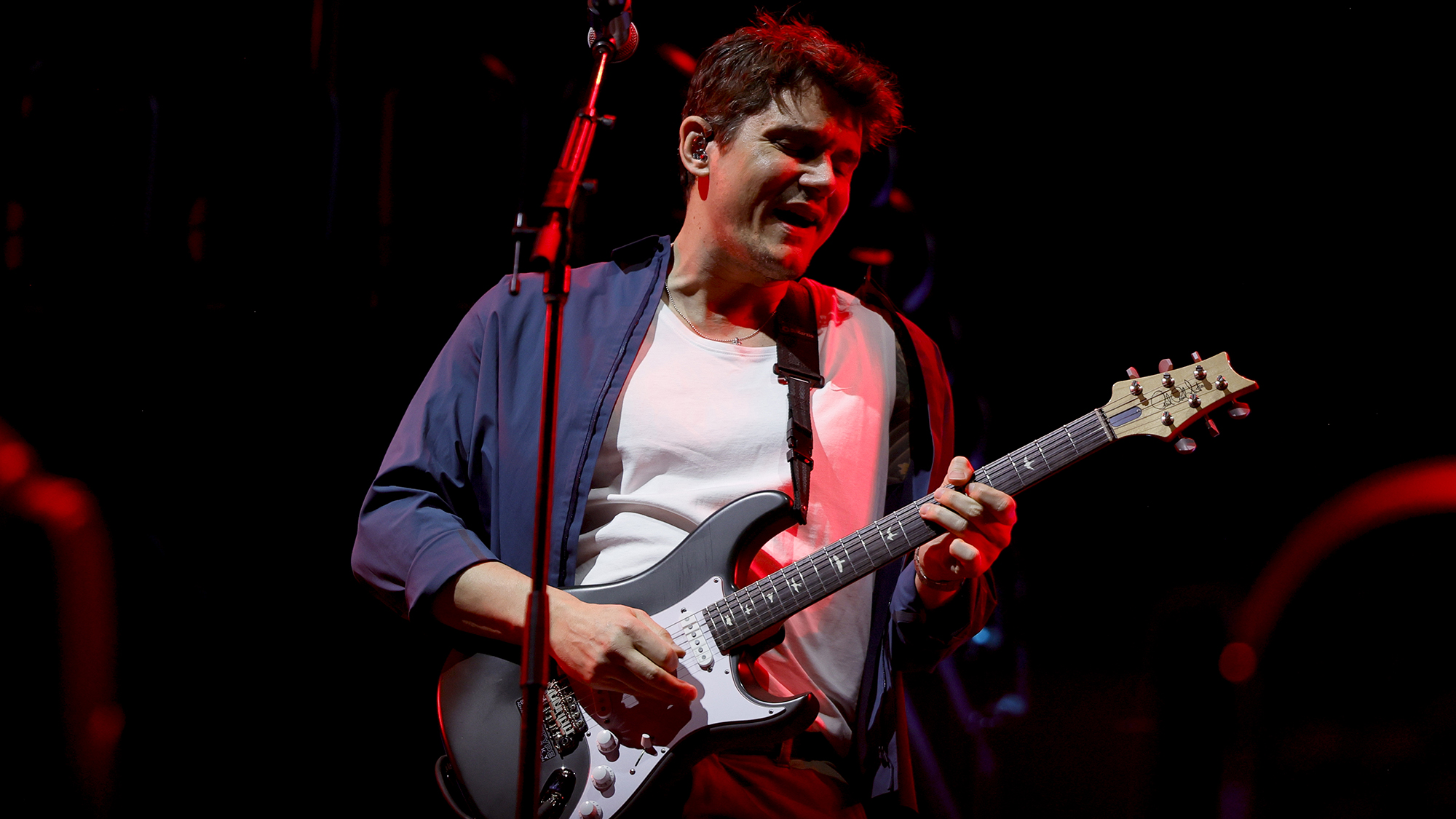The Beatles' Get Back gear: a guide to the guitars and amps seen in Peter Jackson’s long-awaited documentary
The electrics, acoustics and amplifiers that accompanied George Harrison, John Lennon and Paul McCartney in some of their final recordings as the Beatles
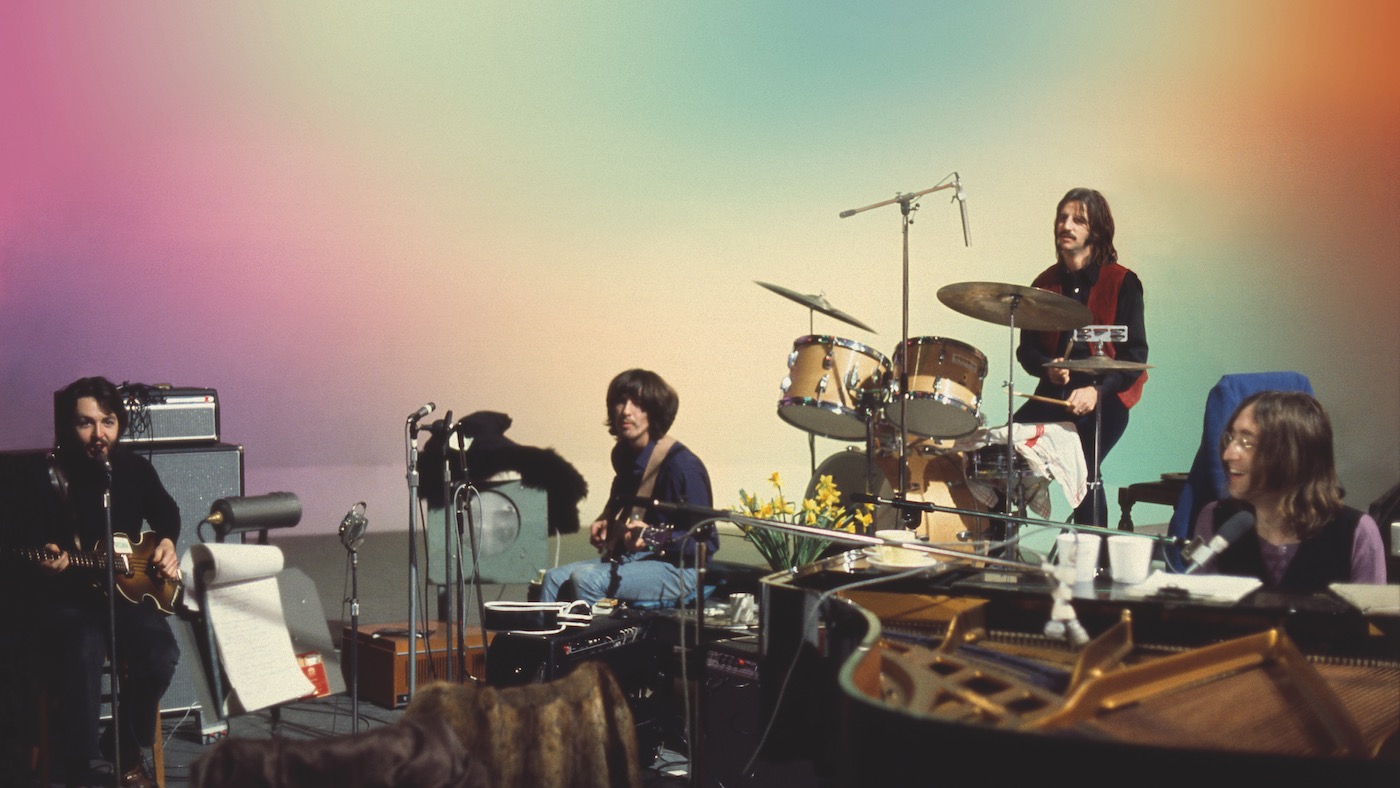
Beatles fans were disappointed last year when director Peter Jackson announced that his long-awaited Beatles documentary film Get Back wouldn’t be released in time for the 50th anniversary of the Let It Be album and film. Get Back is the director’s edit of more than 60 hours of film footage and 150 hours of audio, most of which had never been seen or heard before.
The footage and audio were captured between January 2-31, 1969, at Twickenham Film Studios and the basement recording studio at Apple Corps in London. The footage also includes the Beatles’ legendary final 42-minute live performance on the rooftop of the Apple Corps building on January 30.
The film promises to offer a more positive spin on the interpersonal relationships of the members of the Beatles during a very tumultuous period where the band was splitting apart at the seams.
For musicians who could care less about the drama, the film provides a much closer look at the creative process and the gear that the Beatles were using as they entered the band’s final chapter. The Rickenbacker and Gretsch guitars that defined the band’s “Beatlemania” sound were gone (although McCartney’s Hofner 500/1 bass reappeared) as were the once ubiquitous Vox amps, replaced a mostly new lineup of instruments that went on to become iconic in their own right.
The following is a trainspotter's guide to the various guitars, basses and amps seen in Get Back. Most of this gear later played an important role in the making of the album that many critics consider the Beatles’ true swan song, Abbey Road, recorded a few months after the Get Back sessions.
1968 Fender Rosewood Telecaster prototype

George Harrison played this Fender Rosewood Telecaster for only about a year, but because it was the instrument he played during the Beatles’ final live performance on January 30, 1969, on the rooftop of the Apple Corps headquarters at 3 Savile Row in London, it has become an iconic Beatles guitar.
In addition to its usage at that performance, this Telecaster also played a prominent role during the Get Back sessions in January 1969 and the Abbey Road sessions that took place from February through August 1969. Harrison played this Tele on several latter-day Beatles favorites, including Get Back, Don’t Let Me Down, I’ve Got a Feeling and Let It Be (single version).
Get The Pick Newsletter
All the latest guitar news, interviews, lessons, reviews, deals and more, direct to your inbox!
The Rosewood Telecaster was part of a promotional “care package” that Fender provided to the Beatles, which also included a Bass VI, Jazz Bass, Bassman and Twin Reverb amps, Rhodes electric pianos and a PA system, although the Tele arrived later, occupying a seat on a cross-Atlantic flight in December 1968.
Fender’s director of sales, Don Randall, previously met with Paul McCartney and John Lennon at Apple Corps during July 1968 hoping to land an official endorsement from the Beatles, and, encouraged by their positive response, he decided to sweeten the deal by giving a special instrument to the band’s lead guitarist.
Fender had already planned to introduce new Telecaster and Stratocaster models constructed of rosewood, and Randall thought that presenting a prototype of the Tele to Harrison and a prototype of the Strat to Jimi Hendrix would help promote the new models. Both were designed and built by Roger Rossmeisl and Philip Kubicki, who made two prototypes of each.
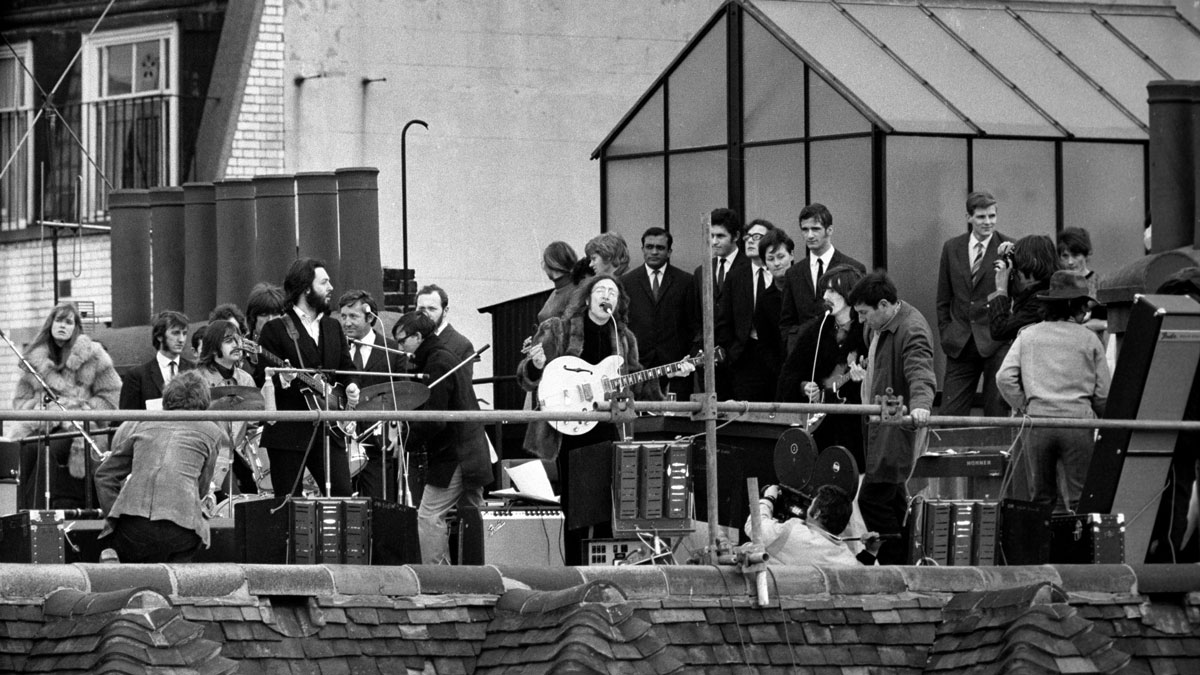
The best example of each model was to be selected and given to the respective artists, although Hendrix died before Fender could arrange the guitar’s delivery to him, a few months after Fender completed the Strat prototype in April 1970.
Interestingly, Rossmeisl already had an indirect relationship with the Beatles through his previous association with Rickenbacker, where he designed the body shapes and styles for the 325 and 360/12 guitars and 4001 bass played by Lennon, Harrison and McCartney, respectively, although Rossmeisl left Rickenbacker in 1962 before the onset of Beatlemania.
The Fender Rosewood Telecaster was not a particularly radical departure from the standard Telecaster design. The biggest differences were the two-piece rosewood neck and the body construction, which consisted of individual two-piece top and back slabs of Indian rosewood with a thin, contrasting layer of maple in between. A clear satin finish preserved the rosewood’s natural grain pattern and root beer brown color.
The high density of the rosewood material also resulted in a total weight exceeding 10 pounds. Ironically, Rossmeisl’s most recent design for Fender preceding the Rosewood Telecaster was the Telecaster Thinline, which was developed primarily as a lightweight alternative to the Telecaster.
The first Rosewood Telecaster production models released later in 1969 featured similar solid construction to Harrison’s prototype, but eventually Fender adopted a chambered design to partially compensate for the excess weight.
Harrison’s love affair with the Rosewood Telecaster was short-lived. In December 1969, he gave the guitar to Delaney Bramlett while briefly touring as a member of Delaney & Bonnie. Bramlett made several modifications to the guitar over the next few decades before he sold it at auction in 2003.
The legendary Rosewood Telecaster finally returned to the Harrison estate when actor Ed Begley Jr. successfully won the bidding on behalf of Harrison’s widow, Olivia. George’s son Dhani subsequently restored the guitar to its original condition.
1965 Epiphone E230TD Casino
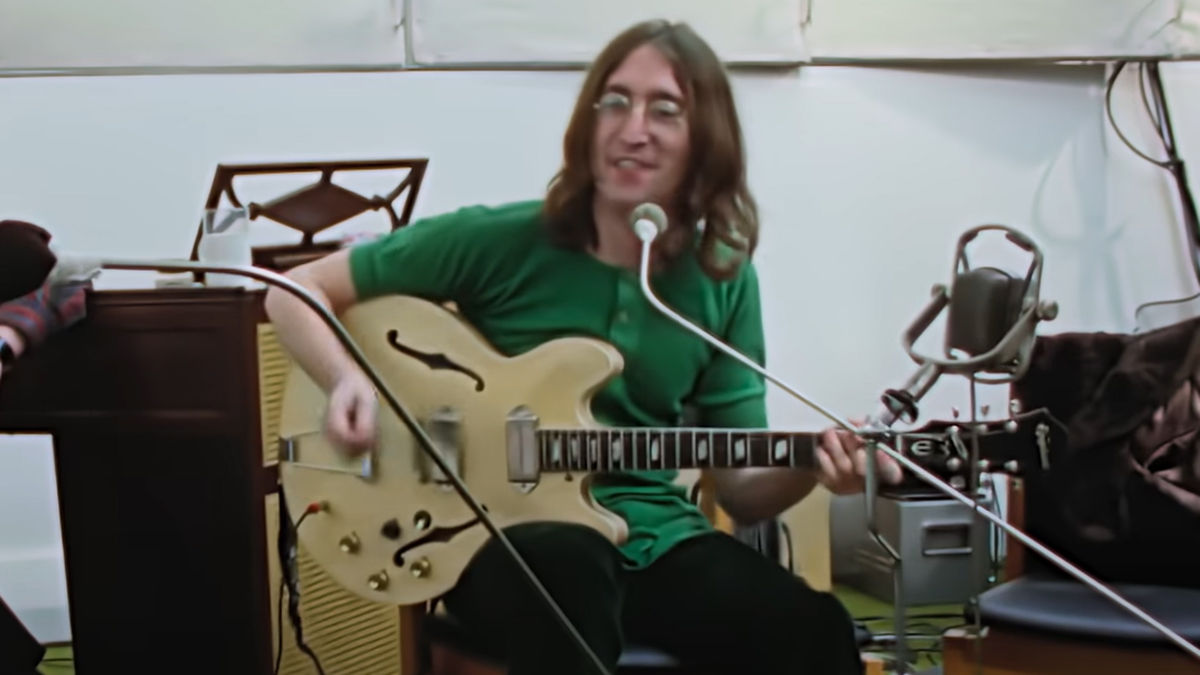
Unlike his bandmate Harrison, who adopted an ever-evolving arsenal of electric guitars during the Beatles’ latter days, John Lennon remained mostly faithful to his 1965 Epiphone E230TD Casino thinline hollowbody ever since he first acquired it in early 1966. He did make a few modifications to the instrument, however, including replacing the Kluson tuners with Grovers and removing the pickguard.
In mid-1968, he had the body’s finish professionally stripped down to the natural wood to improve the guitar’s resonance and tonal response, a modification that Donovan recommended to Lennon. The results were good enough to convince Harrison to do the same with the Epiphone Casino that he also owned.
Although the Beatles frequently swapped guitars between each other while working in the studio, it appears that Lennon’s sole electric (with one non-Spanish exception, the Fender Bass VI) during the Get Back sessions was his Epiphone Casino. The guitar in its natural maple state became an icon thanks to its appearance in the Beatles final rooftop performance featured in the film Let It Be.
Harrison, Lennon and McCartney each owned individual Casino guitars. McCartney was the first to play one starting in 1964, using a Bigsby-equipped 1962 model that he modified for left-handed playing. Harrison’s 1965 Casino also had an aftermarket Bigsby vibrato tailpiece, while Lennon’s featured a standard trapeze tailpiece.
A Casino is heard on numerous Beatles’ songs from the fills of Ticket to Ride to the solos of Taxman through The End. Since the model was played by all three of the band’s guitarists on dozens of songs, it remains the quintessential Beatles guitar.
1968 Gibson J-200
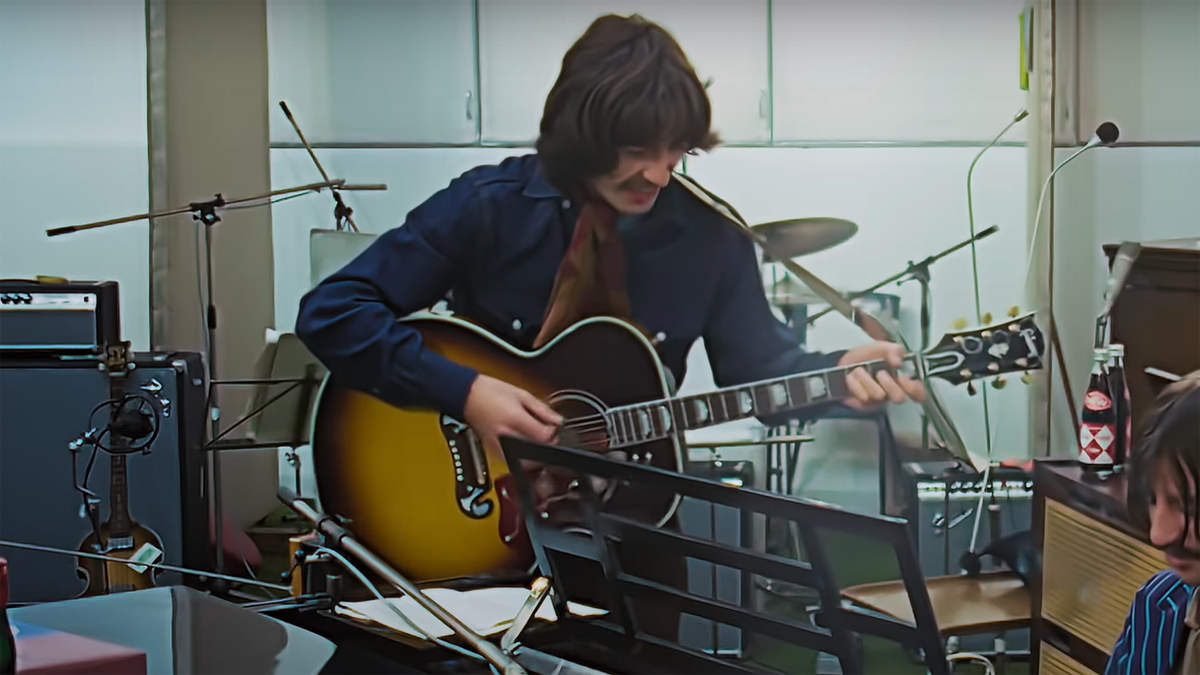
George Harrison acquired a brand new Gibson J-200 in 1968 during the White Album sessions, and it quickly became a favorite option for both Harrison and Lennon while recording acoustic rhythm parts. The guitar is probably best known for its dulcet tones that are the instrumental centerpiece of Here Comes the Sun on Abbey Road.
However, in the Get Back footage, the J-200 actually appears more frequently in Lennon’s hands, where he uses it to perform Maggie Mae and Two of Us. Harrison’s use of the J-200 is limited to his rhythm guitar part for For You Blue.
The Tune-O-Matic adjustable bridge fitted into the top is a distinguishing feature of '60s J-200s. This unusual feature is often derided by acoustic purists who prefer the tone of a J-200 guitar with a traditional saddle. However, many of the best known J-200 recordings were made with a '60s-era, Tune-O-Matic-equipped instrument, including the Who’s Pinball Wizard and Led Zeppelin’s Babe I’m Gonna Leave You.
It’s commonly rumored that Harrison gave the J-200 to his good friend Bob Dylan. Some historians say that it’s the guitar Dylan is seen holding on the cover of Nashville Skyline, while others claim that Harrison gifted the J-200 to Dylan before the Isle of Wight Festival. However, the timeline and photographic evidence proves that neither scenario is true.
Harrison’s first known use of the J-200 was during the White Album sessions from July through October 1968, which is well documented in photos shot by Linda Eastman.
When Harrison visited Dylan’s Woodstock home in late November 1968, Pattie Boyd shot a photo of him at Albert Grossman’s (Dylan’s manager) house playing a J-200. It’s unlikely that Harrison brought his J-200 with him, and instead the guitar was a similar one that belonged to Dylan. Harrison’s J-200 is present at the Get Back sessions throughout January 1969, so he couldn’t have given it to Dylan during the Woodstock visit.
Next, Dylan is photographed in February or March 1969 by Elliott Landy posing with a J-200 in a shot that became the cover of Nashville Skyline. Outtake photos clearly show pick scratches and chips that exposed unfinished maple along the soundhole above the low E string.
When Harrison is photographed in July and August of 1969 with his J-200 during the Abbey Road sessions, no such wear is visible. Similarly, the J-200 that Dylan is seen playing at the Isle of Wight Festival on August 31, 1969, shows no visible signs of wear at the soundhole.
Did Harrison gift his J-200 to Dylan after the folk legend’s Isle of Wight performance? Probably not, as Harrison’s J-200 appeared once again in photos taken shortly afterwards, in the hands of John Lennon when Harrison participated in the January 27, 1970, recording session for the Plastic Ono Band’s Instant Karma! The most logical conclusion is that Dylan and Harrison both owned nearly identical 1968 J-200 guitars, and Harrison only loaned Dylan his J-200 for the Isle of Wight Festival.
Martin D-28 dreadnoughts
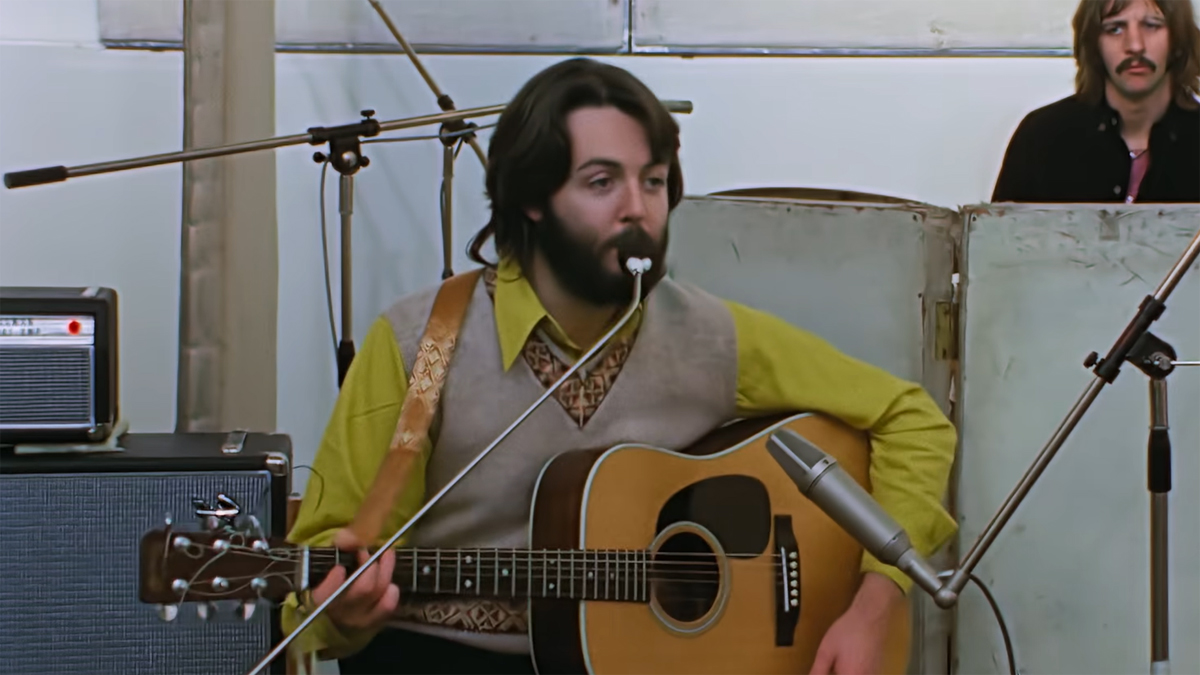
A pair of Martin D-28 dreadnoughts appear throughout the Get Back sessions. One example with its finish and pickguard removed is seen at Lennon’s feet during the performance of Let It Be as well as in his hands during a few brief moments, and the other is played by McCartney during Two of Us and Maggie Mae.
These Martins are the same guitars that Lennon and McCartney took to India in February 1968. Lennon appears to be the first to acquire a D-28, as he was seen with one in the promotional film for Hello Goodbye filmed November 10, 1967. His guitar was a used 1965 model.
McCartney apparently followed suit shortly afterwards, purchasing a new 1967 D-28. McCartney’s Martin was a standard right-hand model that he flipped over, restrung and replaced the nut for left-hand playing. Later he also had the saddle modified for a left-hand configuration.
McCartney still owns his original Martin D-28. Lennon gave his Martin to rockabilly legend Ronnie Hawkins in December 1969 when Lennon and Yoko Ono visited Canada during their campaign to promote world peace. Unfortunately, one of Hawkins’ acquaintances later surreptitiously swapped it for a 1972 D-28, so the whereabouts of Lennon’s D-28 are unknown.
Hofner 500/1 basses
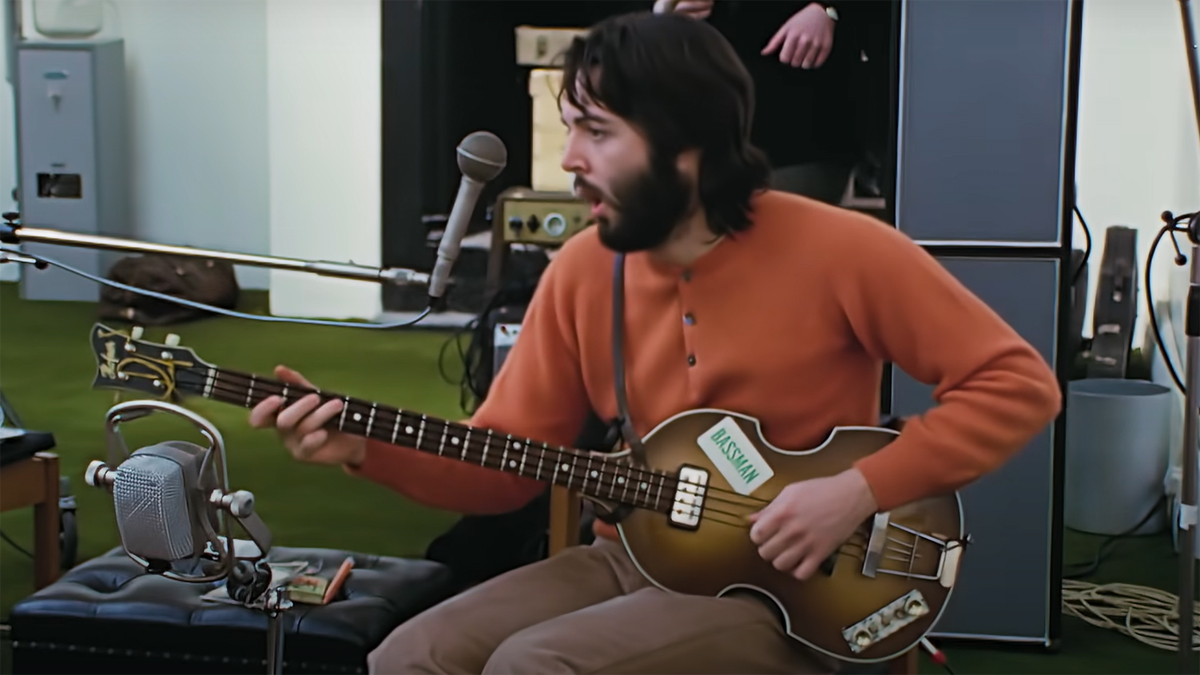
Paul McCartney’s bass of choice from 1966 onwards was a left-handed Rickenbacker 4001S model, but because McCartney envisioned Get Back as a return to the band’s rock and roll roots he decided to dust off his trusty Hofner 550/1 basses and play them once again. McCartney brought both his 1961 and 1963 Hofners to the sessions, but he was only seen playing the ’63 500/1 in the studio and rooftop performance footage.
This was the last time McCartney’s ’61 Hofner was seen in public as it was stolen along with one of Harrison’s Rickenbacker 360-12 12-string electrics and his Gretsch Tennessean from EMI’s Abbey Road studios a short time afterwards. Hofner recently announced a campaign to recover the bass, but to date no credible leads have surfaced.
McCartney briefly decorated his 1963 500/1 with a Bassman sticker that he removed from the 2x12 speaker cabinet that Fender had sent the band. Eagle-eyed fans who viewed the Let It Be film in 1970 were surprised to see that the bass still had the set list from the Beatles final concert in 1966 taped to its side.
1968 Fender Bass VI

In a “blink and you’ll miss it” shot from the Get Back footage, the distinctive maple headstock of a Fender guitar can be seen leaning on Billy Preston’s Fender Rhodes electric piano. This split-second shot got the hearts of fans of Lennon and Harrison’s famous pair of 1961 Sonic Blue Stratocasters fluttering, as the Strats were thought to be absent from the January 1969 Get Back sessions (although Harrison was photographed in the studio with his ’61 “Rocky” Strat with psychedelic Day-Glo paint job during the later Let It Be sessions).
However, closer examination reveals that it’s actually a large CBS-era headstock (not the smaller headstock of '50s and early '60s Strats) and white fretboard binding is visible, so the instrument in question is most likely the Fender Bass VI that Lennon played on Dig It, Let It Be and The Long and Winding Road and Harrison played on Two of Us.
Harrison and Lennon both previously played the Fender Bass VI during the White Album sessions. Although Fender sent a right-handed Jazz Bass to the band in 1968, both guitarists seemed to prefer the wider sonic range of the Bass VI as well as its potential for playing standard guitar chords (as Lennon did on Dig It), even though both usually ended up using the Bass VI to play traditional bass lines during the Get Back sessions. Lennon or Harrison used the Bass VI plugged into a Fender Bassman head with 2x12 speaker cabinet when McCartney was playing either piano or guitar.
Hofner 5140 Hawaiian Standard

One guitar from the Get Back sessions that often gets overlooked is the Hofner 5140 Hawaiian Standard lap steel that John Lennon plays on For You Blue. The 5140 was a decent student model produced in the mid-'60s. Catalog copy vaguely describes the body being made of “solid wood,” and other details include a Nova-Sonic double-pole single-coil pickup, tone and volume controls and mirror-finish plated metal tailpiece with string guard.
In addition to Lennon’s unorthodox playing style of not damping behind the bar, Lennon also used an unorthodox slide bar to play the lap steel. The round shape, red color and brass end led many to assume that he was using a shotgun shell, while others argued it was a lipstick tube.
Closer examination reveals a silver metal protrusion cupped by Lennon’s palm, which means that he was actually using a cigarette lighter. Certainly the Beatles always had a lighter in close reach to ignite their jazz cigarettes.
One question that doesn’t get asked often enough is what tuning was Lennon using. The answer? Open D7: DADF#CD.
Fender Twin Reverb and Bassman amps
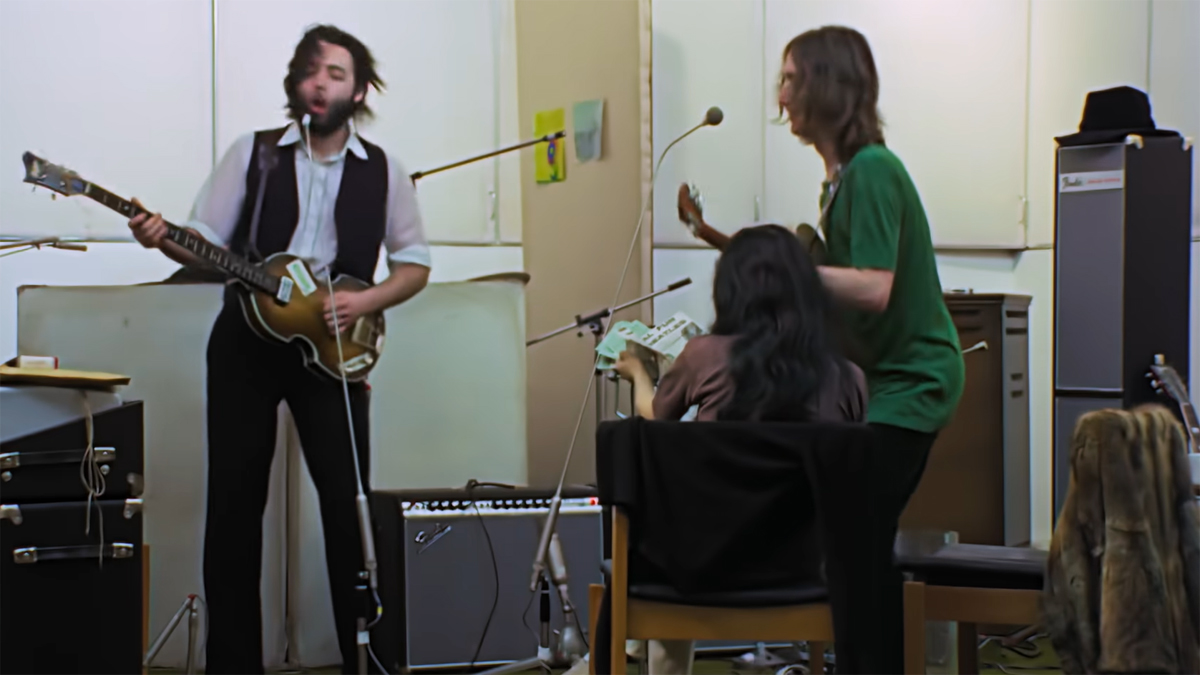
Vox amps played such an important role during the Beatles’ early and mid-'60s recordings that it’s difficult to imagine them recording with anything else, but when the sessions for the White Album began in late May 1968 Vox amps were nowhere to be found. Instead, John, Paul and George switched their allegiances to Fender amps, with an occasional Selmer in the mix when Paul played a solo or two.
Fender was certainly thrilled with this development when Don Randall approached the band in July 1968, and he repaid their devotion in kind by sending several brand new 85-watt Fender Twin Reverb combos and a 50-watt export model Bassman head with a 2x12 speaker cabinet. After the new gear arrived in England, the Beatles immediately put them to use during the Get Back sessions.
Three Twin Reverb amps are seen both in the studio and live rooftop performance footage. Harrison and Lennon plugged into the side-by-side pair, while the third Twin amp on the far right was provided to amplify a Hohner Pianet N electric piano that was a never-used backup to Billy Preston’s Fender Rhodes Mark I Suitcase 73 (which was amplified by its built-in 50-watt amp and speaker cabinet base).
Lennon plugged his Casino into the Twin Reverb’s Normal channel, while Harrison preferred the added versatility of the Vibrato channel, occasionally dialing in a touch of spring reverb.
Leslie 147RV
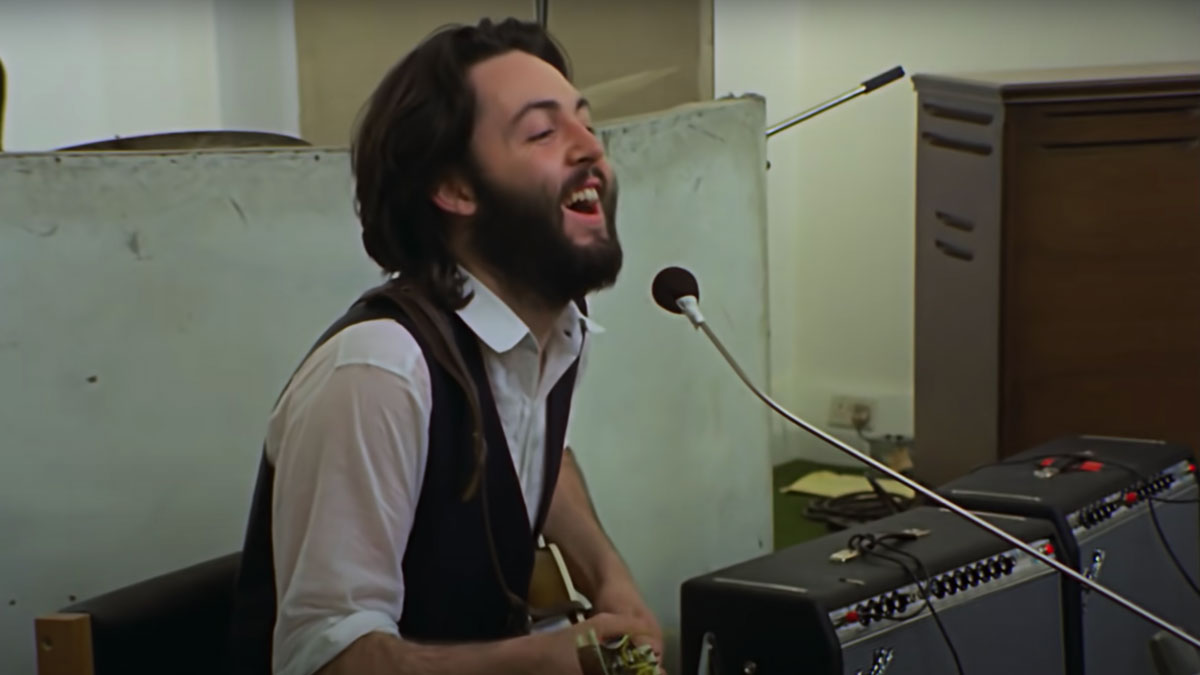
Another frequently overlooked but essential item in the Beatles’ gear arsenal during the Get Back sessions is the Leslie rotating speaker cabinet that Harrison often used to add a distinctive warbling texture to his guitar solos, particularly on the single version of Let It Be.
Harrison previously plugged into a Leslie that was on hand at the EMI Abbey Road studios, but since the Get Back sessions were held at Twickenham Film Studios and the studio at Apple Corps, the Beatles lead guitarist faced the prospect of working without his favored sound-shaping tool.
Fortunately, Eric Clapton came to the rescue shortly before the sessions began, giving Harrison a Leslie 147RV cabinet. The Leslie was also put to good use when Billy Preston played the Hammond L100 organ.
Disney Plus: $7.99 per month
Don't miss out on the musical documentary event of the year and subscribe to Disney+, the only place you can watch Peter Jackson's The Beatles: Get Back documentary. At $7.99 a month, you can also watch the entire catalog of Disney classics and a wealth of modern favorites, including The Mandalorian, The Simpsons and all the Star Wars films.
Chris is the co-author of Eruption - Conversations with Eddie Van Halen. He is a 40-year music industry veteran who started at Boardwalk Entertainment (Joan Jett, Night Ranger) and Roland US before becoming a guitar journalist in 1991. He has interviewed more than 600 artists, written more than 1,400 product reviews and contributed to Jeff Beck’s Beck 01: Hot Rods and Rock & Roll and Eric Clapton’s Six String Stories.
“Sonically excellent… we found that it could be a viable substitute for our vintage 1970s pedals”: Hamstead x That Pedal Show Redwing Analogue Stereo Modulator review
“An esoteric boutique vibe, superb ergonomics and a powerful, unique preamp – Tobias is back”: Tobias Growler IV review



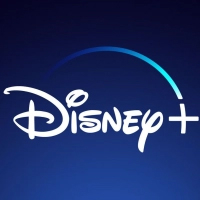


![A black-and-white action shot of Sergeant Thunderhoof perform live: [from left] Mark Sayer, Dan Flitcroft, Jim Camp and Josh Gallop](https://cdn.mos.cms.futurecdn.net/am3UhJbsxAE239XRRZ8zC8.jpg)








